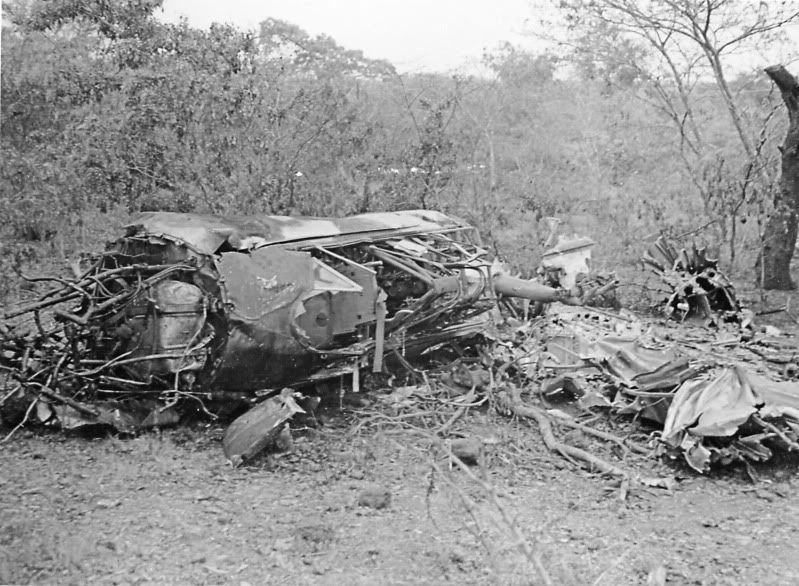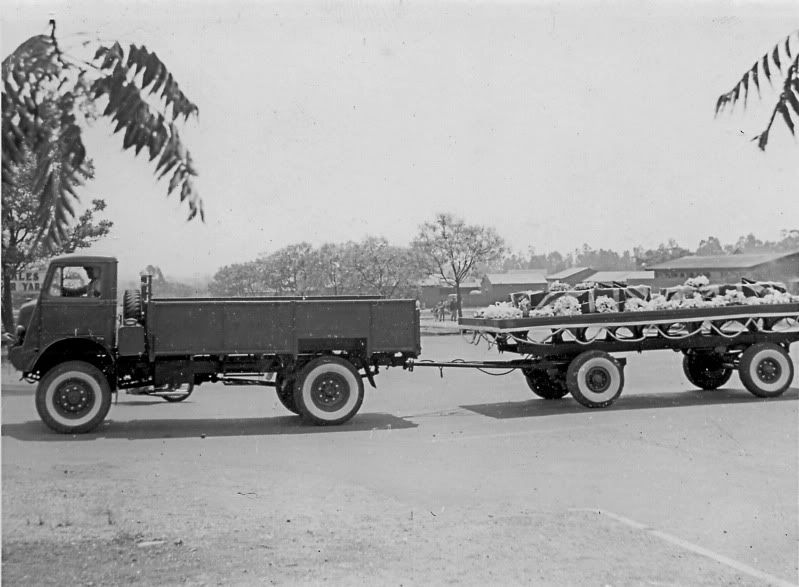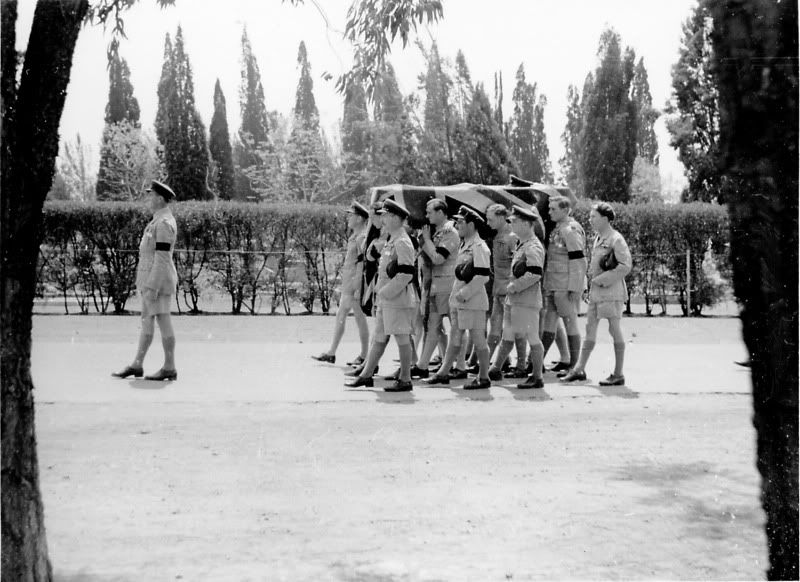With all the talk of the closure of R.A.F. Lyneham and the funeral processions no longer passing through Wooten Basset it’s time to reflect as to how service funerals were handled in an earlier age.
In 1951 I was posted to 5 FTS, R.A.F. Thornhill in the then Southern Rhodesia. I’d always been a bit of a camera buff and took my fairly primitive (by today’s standards) folding Zeiss-Ikon camera — which I still have, and used it profusely to record my service in the R.A.F. as a result that I have hundreds of photos in my albums recording the various service activities both at home and abroad.
Being abroad for the first time and in Africa too, was a wonderful opportunity to photo everything that moved, which of course I did. But once in the colony at R.A.F. Thornhill, one thing stood out to someone who was not used to service life and this was the number of aircraft accidents.
By present day standards an enormous number of aircraft were on strength. R.A.F. Thornhill had an inventory of between 80-100 aircraft; 27-30 Tiger Moths for primary training that were gradually replaced from September 1951 onwards by a similar number of Chipmunks, 60-65 Harvards for advanced training and 12 Ansons for navigational training. The Ansons were returned to the UK when 3 ANS closed at the end of 1951.
Accidents
Despite the excellent climate of Southern Rhodesia which offered the student-pilot almost unlimited flying, the accident rate was high so that crashes and forced landings were regular occurrences. Although I don’t have the statistics for RAF Thornhill, at 4 FTS at RAF Heany, 100-miles south near Bulawayo, 21 Harvards and 18 Tiger Moths were lost during a 4-year period, the majority of these losses being attributed to the pupils’ inexperience in the featureless terrain.
Tiger Moths were not ideal for primary training in Rhodesia being seriously underpowered at the airfield height of 4,680 feet above sea level. During the summer months the ever present bumpy thermals could cause controllability problems to novice Tiger Moth pilots. Things improved with the arrival of Chipmunks in late 1951.
The night of 26-27th September 1952 was a bad night for the Rhodesian Air Training Group. RAF Thornhill (5 FTS) lost two aircraft which resulted in the death of three airmen on training exercises and R.A.F. Heany (4 FTS) lost one aircraft.
The first aircraft to be lost was a Thornhill Harvard (KF498) with a pupil pilot on a solo cross-country navigation exercise that crashed 40-miles SE of Thornhill at position 19.53S, 30.15E. Pilot Officer L. Warren, the pilot of that aircraft, died.
The other Thornhill accident was the crash of Harvard KF482, in which instructor Flying Officer C. G. Keyte DFC and student Pilot Officer W. Wills received fatal injuries. Their aircraft crashed into trees on farmland near the airfield boundary at night whilst overshooting. The night was particularly dark, no moon, thick haze, no perceptible horizon, a deadly combination; we were told that the cause of the accident was that the pupil pilot retracted the flaps in mistake for the undercarriage and as a result the aircraft stalled into trees near the airfield boundary, just missing a farmhouse. Bravely, the owner of the farmland in which it crashed attempted to rescue the two occupants, but was defeated by the flames. The farmer was subsequently awarded the George Medal for his heroism.
I knew of the award of the George Medal award, but not the name of the recipient and during a visit to The National Archives at Kew researched and found a copy of the letter sent back to London in one of the HQ RATG files that made a recommendation for the award of the medal. This threw up a further surprise and showed that a farm worker was awarded the BEM for his efforts in trying to rescue the airmen from the burning aircraft. The farmers (a Mr T V Chisnall and Mr R W F Fox) were subsequently awarded the George Medal and BEM respectively for their bravery.
The same night a further RATG Harvard from 4 FTS (RAF Heany) also crashed killing the pilot, Pilot Officer A. Newman.
So back to the photos I took at the time.

The path through the trees taken by Harvard KF482.

The wreck of KF482

Following the funeral service in the station church, the funeral cortège of Flying Officer C. G. Keyte, Pilot Officer W. Wills and Pilot Officer L. Warren who were afforded full military honours at the committal in the military plot of Gwelo (Gweru) cemetery.

The bearer party carry the coffins to the graves.

W/Cdr Bromley, Wing Commander (Admin) RAF Thornhill gives the final salute at the committal.
As an addendum: When did we introduce the practice of bringing back to the UK the bodies of servicemen who'd died overseas, rather than burying them locally?